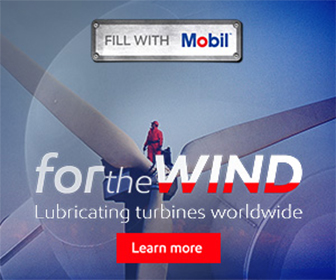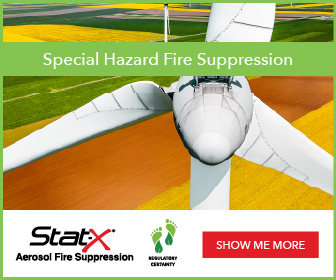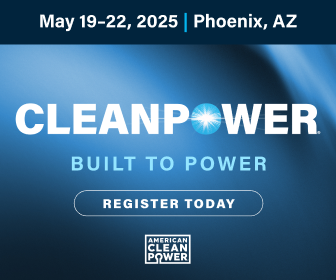Xcel Energy is the Top Performing Wind Energy Asset Owner in the USA; GE is the Top Wind Turbine OEM
Using audited data from the Energy Information Administration (EIA), which is a part of the Department of Energy (DoE) in the United States of America, IntelStor has now completed the most detailed analysis of the efficiency of wind power ever in the country.
Including decommissioned turbines and wind parks, the USA has a total pool of more than 85,500 onshore and offshore wind turbines, and over 151.7GW worth of onshore and offshore wind power installed capacity which can be analyzed.
The analysis shows that the USA has a 34.84% combined lifetime average net capacity factor (NCF) for the entire installed base of more than 85,500 wind turbines.
The evolution of lifetime average net capacity factor over time shows a marked increase in average performance from +20 years ago. For assets installed around the year 2000, the USA had an average net capacity factor of just 26.45%. By 2003 that fleetwide average figure exceeded 30% for the first time. It took another 10 years from that point until 2014 before lifetime average fleetwide performance was above a 40% net capacity factor.
South Dakota, with an average of 42.78% across all wind parks, edges out Nebraska and Kansas to lead the USA in lifetime average net capacity factor of assets that are still operational, as well as those which have been decommissioned.
BlackRock (avg 45.62% NCF), Ørsted (avg 43.35% NCF) and Xcel Energy (avg 43.05% NCF) have the highest fleetwide capacity factors based on asset ownership which is concentrated in Texas, North Dakota, South Dakota, New Mexico, Nebraska, Colorado and Minnesota.
The three largest asset owners in the USA, NextEra Energy Resources (avg 36.78% NCF), Berkshire Hathaway Energy (BHE), including MidAmerican Energy Company and PacifiCorp (avg 37.10% NCF), and Iberdrola's Avangrid Renewables (avg 31.23% NCF) have an older and more geographically diversified fleet which has dragged their performance down relative to others.
Since lifetime average net capacity factor (NCF) is highly dependent on the specific site conditions of a wind park, variations in average wind speed from state to state, or even site to site within a state, can create a bias to the benchmarking analysis that is solely based on NCF. Therefore, it is also important to look at asset performance benchmarking based on energy yield analysis as well.
In the USA, over 51.76% of all operational onshore wind energy assets show that they meet or exceed their P50 performance quotation. Approximately 34.25% of operational assets meet or exceed a P75, but not their P50, while 12.69% meet or exceed a P90, but not their P75 energy yield. Only 1.3% of the wind turbines installed in the USA fall below their P90 performance quote based upon their lifetime average AEP and capacity factor analysis.
Xcel Energy, with a total of 4.38GW of operational capacity installed in the United States, has truly exceptional performance with 96% of their fleet operating at or above a P50 energy yield ranking. This is truly unrivalled performance, even unmatched in other countries.
Some of the largest asset owners in the USA have a performance ranking probably as expected, with NextEra Energy Resources seeing more than 66.7% of their operational capacity in the P50 range. Similarly, Berkshire Hathaway Energy (BHE) has just a fraction below 78% of their installed fleet operating at or above a P50 energy yield.
However, Iberdrola’s Avangrid Renewables, Energias de Portugal Renewables (EDPR) North America and RWE as the next three in line for total installed capacity all show significantly lower performance amongst their fleet. Iberdrola’s dependance on legacy Gamesa turbines globally has certainly dragged down their performance in the USA, along with their current lack of repowering prowess when compared to the other large asset owners.
Engie, American Electric Power (AEP), Southern Company and Alliant Energy are the most noteworthy amongst the top 25 asset owners by installed capacity in the USA aside from Xcel Energy. This is due to respective fleets with no assets which perform below a P75 energy yield rank.
GE Renewable Energy has the largest installed base in the USA with 60.8GW operational, but also the largest portion of their operational fleet performing at or above a P50 energy yield, a total of 61.59%. Vestas is in the #2 spot with a total of 61.1% of their 38.2GW operating at or above a P50 energy yield, and Siemens Gamesa rounds out the top 3 with 23.3GW installed, but only 36.75% operating at a P50 energy yield.
Age-related performance degradation of wind turbines can have profound impacts on asset profitability, through the unrecovered loss of lifetime average performance in the later years of the asset life. In the USA, dating back to the earliest installations in the 1980s, IntelStor can currently estimate a total of 114.4 terra-watt hours of wind energy production were lost due to curtailments and underperformance issues, underscoring the importance of proper fleet care and management.
The USA has a capacity weighted average asset performance drop-off of more than 10% in average annual AEP after approximately 11 years for the entire onshore wind installed base, including both operational and decommissioned capacity. The asset age since the commissioning date which shows the highest frequency of performance drop-off is 10 years, with a standard distribution curve around that time frame.
The major asset owners in the USA, who tend to self-perform their maintenance, actually have a relatively longer period of asset operations prior to the age-related performance drop-off. However, it is also noteworthy that they still show a comparable frequency of performance drop-off versus OEM maintenance or maintenance services from an independent service provider.
Now, with more than 47GW of assets in the USA which are at least 10 years old or older, there is ample opportunity for all states, all project developers, all asset owners and all investors to collectively take maximum advantage of the available wind resources in the USA and repower older wind parks with more efficient technology.
Data availability, transparency and analysis will remain critical to success in the commercial growth.
IntelStor | www.intelstor.com/store












